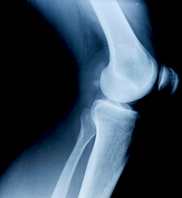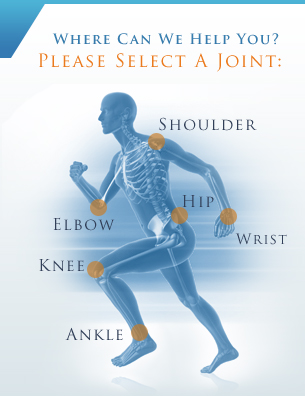
Procedures: Knee
|
|
ACL Injury Treatment
 The ACL (anterior cruciate ligament) is one of the most commonly injured ligaments in the knee. Running diagonally through the middle of the joint, the ACL works together with three other ligaments to connect the femur (upper leg bone) to the tibia (lower leg bone). People who play sports that are likely to damage the knee -- such as basketball, football, skiing and soccer -- are at greatest risk for injuring the ACL. Only about 30% of ACL injuries result from direct contact with another player or object. The rest occur when the athlete decelerates while cutting, pivoting, or sidestepping; lands awkwardly; or plays recklessly. About half of ACL injuries are accompanied by damage to the meniscus, cartilage, bone or other ligaments in the knee.
The ACL (anterior cruciate ligament) is one of the most commonly injured ligaments in the knee. Running diagonally through the middle of the joint, the ACL works together with three other ligaments to connect the femur (upper leg bone) to the tibia (lower leg bone). People who play sports that are likely to damage the knee -- such as basketball, football, skiing and soccer -- are at greatest risk for injuring the ACL. Only about 30% of ACL injuries result from direct contact with another player or object. The rest occur when the athlete decelerates while cutting, pivoting, or sidestepping; lands awkwardly; or plays recklessly. About half of ACL injuries are accompanied by damage to the meniscus, cartilage, bone or other ligaments in the knee.
Signs that you may have injured your ACL include pain, swelling and instability immediately after the injury, followed hours later by greater swelling and pain, limited motion, tenderness and an inability to walk comfortably.
ACL Reconstruction
A tear in the anterior cruciate ligament (ACL) is one of the most common knee injuries. An injury to this ligament causes the knee to become unstable and the joint to slide forward too much. ACL tears occur most often in athletes.
ACL reconstruction is usually not performed until several weeks after the injury, when swelling and inflammation have been reduced. The torn ligament is completely removed and replaced with a new ACL. Simply reconnecting the torn ends will not repair the ACL. Part of another ligament, usually from the knee or hamstring, is used to create a graft for the new ACL. Choosing the proper type of graft depends on each patient's individual condition.
ACL surgery requires a few months for full recovery and physical rehabilitation will be needed as well. Surgery is not required for all ACL injuries. Talk to your doctor to find out if ACL reconstruction is right for you.
Autologous Chondrocyte Implantation (ACI)
 Autologous Chondrocyte Implantation, commonly known as ACI, is a surgical procedure that treats cartilage damage caused by injury or degeneration. This procedure is most often performed to treat the knee, although it can be used on other joints as well. It is used after nonsurgical treatments have failed and cartilage damage is severe.
Autologous Chondrocyte Implantation, commonly known as ACI, is a surgical procedure that treats cartilage damage caused by injury or degeneration. This procedure is most often performed to treat the knee, although it can be used on other joints as well. It is used after nonsurgical treatments have failed and cartilage damage is severe.
During the ACI procedure, your surgeon will use arthroscopy to identify the area of cartilage damage and remove a small sample of healthy cartilage cells. These cells are sent to a lab, where they are duplicated over the next four to six weeks. Once enough cells have been grown, a second procedure is scheduled, during which the new cartilage is implanted into the joint with the aid of a periosteal patch.
After this procedure, patients will need to undergo a physical therapy program in order to restore full function to the treated area. The ACI procedure is ideal for patients with only small areas of cartilage damage, who have significant pain and swelling, and who are not obese. This procedure is considered safe for most patients, although there is a risk of scar tissue formation, infection and knee stiffness developing after surgery.









